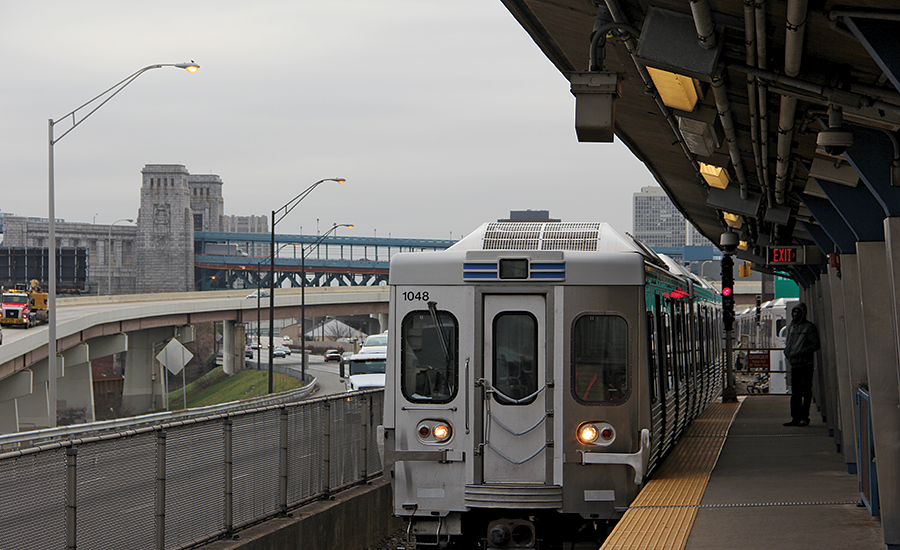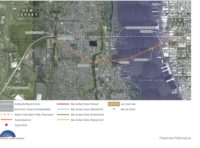Regenerative braking is widely used in electric and hybrid cars, but its first commercial use in an urban transit system is only now being built in the Philadelphia area.
Regenerative braking occurs when a vehicle, such as an electric car or train, uses its motor to stop. The motor is put into reverse and becomes a generator, pumping electricity back into the wires that delivered it.
Transit agencies have been using the technology for years, flowing back power into overhead lines or the third rail, where it can be picked up and used by the next passing train.
The Washington, D.C., Metro system has been using regenerative braking since 1983. In Oregon, Portland’s TriMet has used it since 1997. About 80% of Amtrak’s electric fleet in the Northeast Corridor uses regenerative braking, and the agency estimates it has reduced energy consumption by about 8%, according to a 2012 report.
The problem with those systems is, without an immediate need for the power, the power is lost. Philadelphia’s Southeastern Pennsylvania Transportation Authority (SEPTA), for instance, estimated that only 30% to 50% of the regenerated energy was being used.
Those savings were not enough to justify the investment to add energy storage to the system. “We are not doing wayside [energy storage] just to go green. It is absolutely critical that there is a financial return,” Erik Johanson, director of innovation at SEPTA, says.
Then, in 2011, SEPTA combined forces with Conshohocken, Pa.-based Viridity Energy and won a $900,000 grant from the Pennsylvania Energy Development Authority for a project that combines regenerative braking with battery storage.
The project reduced SEPTA’s demand by 20%, but the key component came from Viridity. The energy services company provided a software interface between SEPTA and the PJM Interconnection, operator of the mid-Atlantic wholesale power market. The software allows SEPTA’s stored energy to be sold into PJM’s frequency-regulation market, where it is used to balance the supply and demand of power. The profits SEPTA and Viridity shared from those sales made the project economically viable.
SEPTA then did another, slightly larger, 1-MW wayside storage project. “If we could combine saving money with generating revenue, we could create the financial justification” for expanding wayside storage, Johanson says. The benefits were demonstrated, he says, but “we didn’t have the capital for the expansion.”
To bridge that gap, SEPTA teamed up with Constellation, an electricity retailer. They came up with a structure under which Constellation would pay to bring the project up to commercial scale. Viridity still provides the interface with PJM, but Constellation is underwriting the addition of seven storage devices, totaling 8.75 MW. The deal is financed through a 20-year battery services agreement with SEPTA.
Constellation did not disclose the cost of the build-out, but industry estimates put it at $12 million to $14 million.
The key to the SEPTA project is that “there is more than one stream of value,” Ben Chadwick, director of distributed energy development for Constellation, says.
From SEPTA’s point of view, the organization gave up some revenues but essentially got the batteries for free, Johanson says.
Other municipalities are looking at adding energy storage to their transit systems. Los Angeles has installed a 2-MW system under a $4.46-million federal grant. In Oregon, the Portland-Milwaukie Light Rail Transit system is exploring storage using a different technology: supercapacitors.
But, as Johanson notes, the key to the system is not so much the technology as the P3 model that SEPTA pioneered. The deal was difficult and multilayered, but it is replicable, he says.
Tyler Breiner, senior manager of partnerships and projects at Viridity, says his company already has had discussions with transit officials in Chicago, New York City and Washington, D.C.



